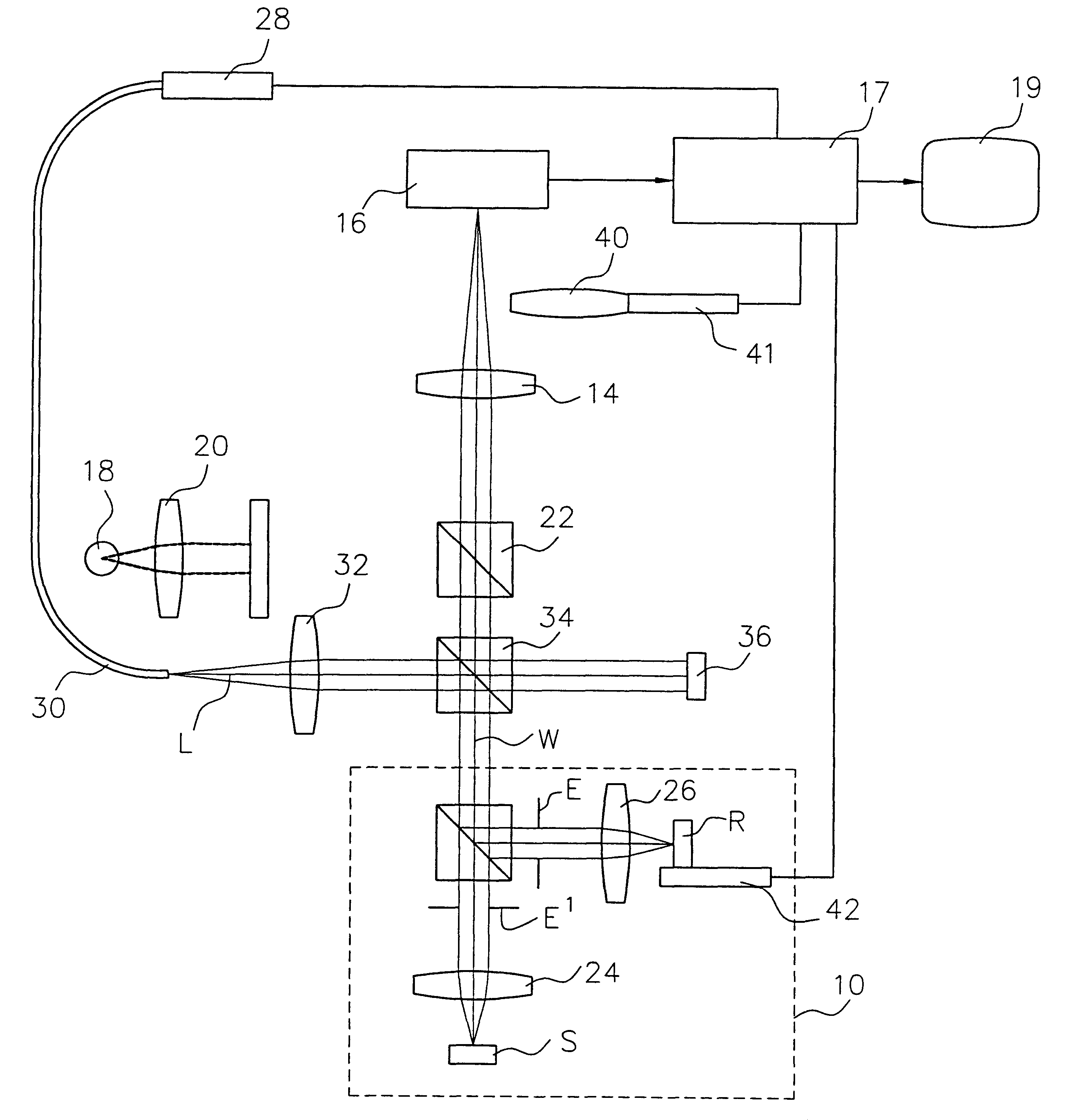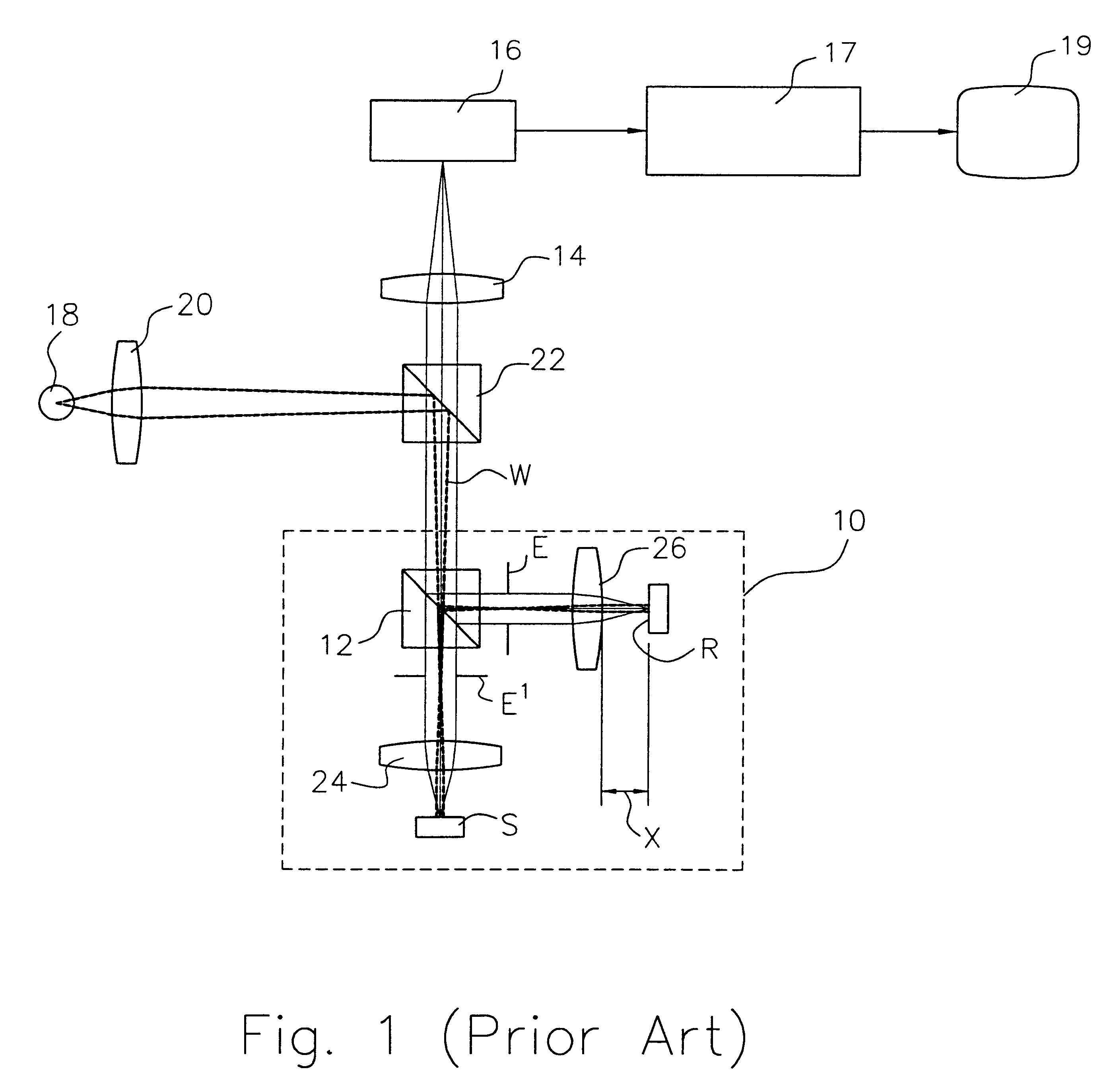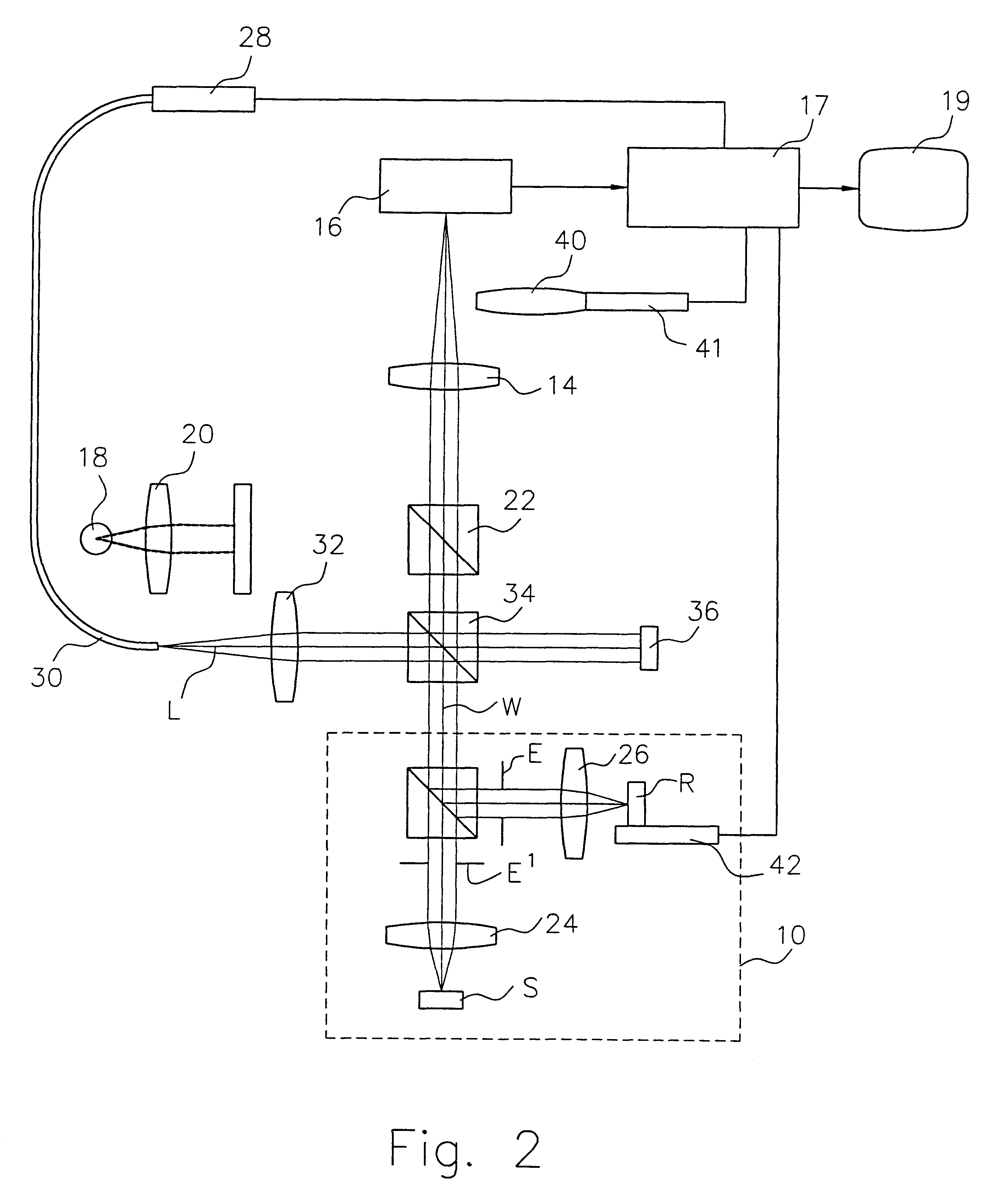Embedded interferometer for reference-mirror calibration of interferometric microscope
a reference mirror and interferometer technology, applied in the field of interferometry, can solve the problems of vibration, wear, and different results of different operators, and achieve the effect of easy and economical implementation
- Summary
- Abstract
- Description
- Claims
- Application Information
AI Technical Summary
Benefits of technology
Problems solved by technology
Method used
Image
Examples
embodiment 50
Furthermore, in accordance with the general concept of the invention, it is understood that it can be implemented in various alternative optical embodiments that make it possible to determine the shape of the return wavefront from the reference mirror R. As would be understood by those skilled in the art, this can be accomplished even without a calibration reference surface 36 by interfering the return wavefront RB with a separate collimated beam of light (which may result from splitting the laser beam L, as in the case illustrated for the preferred embodiment of FIG. 5) in the optical path to the sensor array 16, or equivalently by passing the return wavefront through a shearing interferometer, such as a shear plate, to produce two interfering beams. For example, FIG. 10 shows schematically the invention wherein two laser beams L and L' are produced by a fiber-optic splitter 52 (or, equivalently, by two separate compatible lasers); the first beam L is directed toward the reference ...
embodiment 60
Another embodiment 60 of the invention is implemented by splitting the single beam L out of the optical fiber 30 in a splitter 62 and routing it directly to the imaging array 16 using two additional reflective surfaces 64 and 66, as illustrated in FIG. 11.
An equivalent implementation 70 using a single light beam L and a shear plate is shown in FIG. 12. The return wavefront RB produced by the laser beam L is diverted in a splitter 72, re-directed by folding mirrors 74,76, passed through a shear plate 78, and directed to the array 16. It is well known in the art that the interference of the waves emerging from the shear plate will produce parallel fringes having orientation depending on whether the incident wavefront is plane or spherical (i.e., diverging or converging). Therefore, the direction of the fringes in an interferogram of the light detected by the sensor 16 in relation to their in-focus position enables the immediate identification of the out-of-focus condition of the mirro...
embodiment 80
It is also noted that the return wavefront RB in all embodiments illustrated in the figures is directed to the sensor array 16 of the interference microscope in order to utilize hardware already available to perform interferometric measurements. On the other hand, the concept of the invention could be carried out in equivalent fashion by adding additional detector hardware 16' solely for the purpose of calibration, as illustrated schematically with FIG. 13 with reference to the shear-plate implementation. It is also understood that the shape of the return wavefront may be determined by various other tests known in the art, such as, without limitation, the knife-edge, wire, and screen tests.
PUM
 Login to View More
Login to View More Abstract
Description
Claims
Application Information
 Login to View More
Login to View More - R&D
- Intellectual Property
- Life Sciences
- Materials
- Tech Scout
- Unparalleled Data Quality
- Higher Quality Content
- 60% Fewer Hallucinations
Browse by: Latest US Patents, China's latest patents, Technical Efficacy Thesaurus, Application Domain, Technology Topic, Popular Technical Reports.
© 2025 PatSnap. All rights reserved.Legal|Privacy policy|Modern Slavery Act Transparency Statement|Sitemap|About US| Contact US: help@patsnap.com



